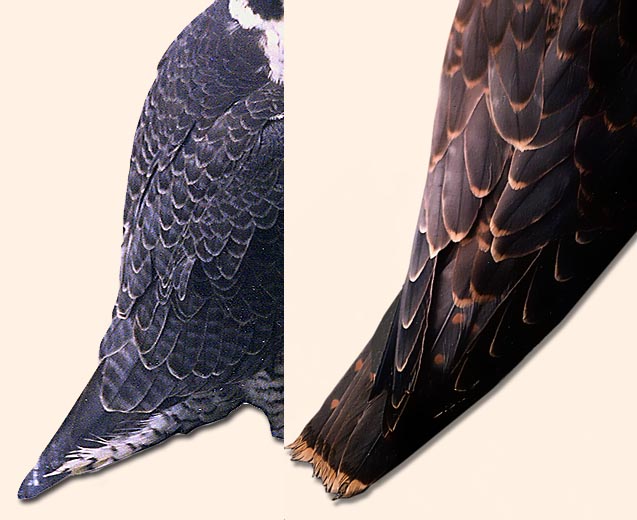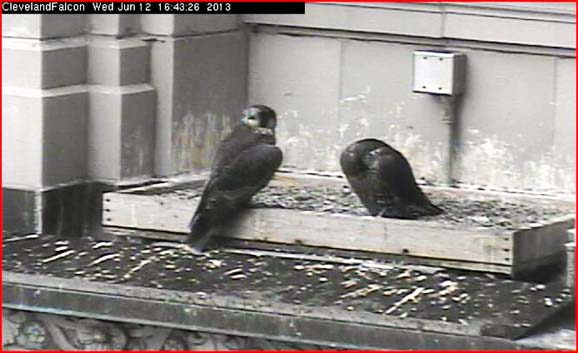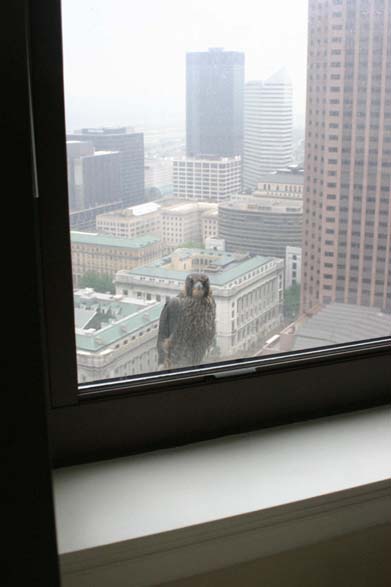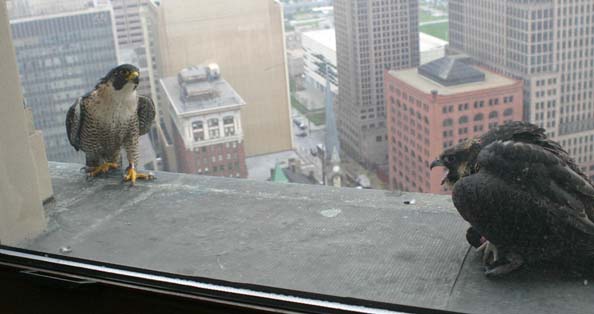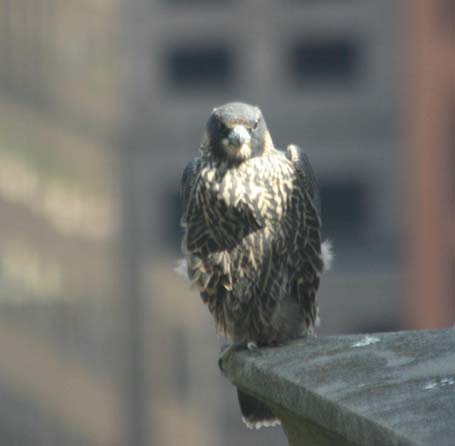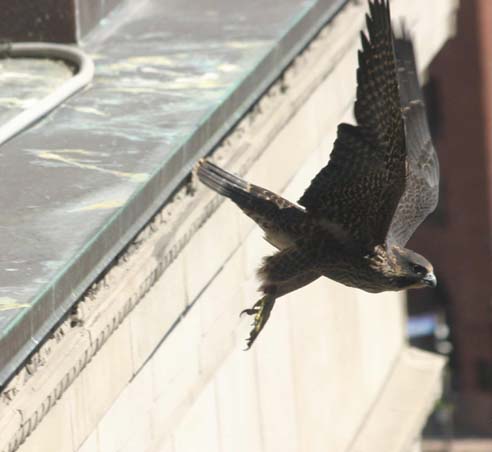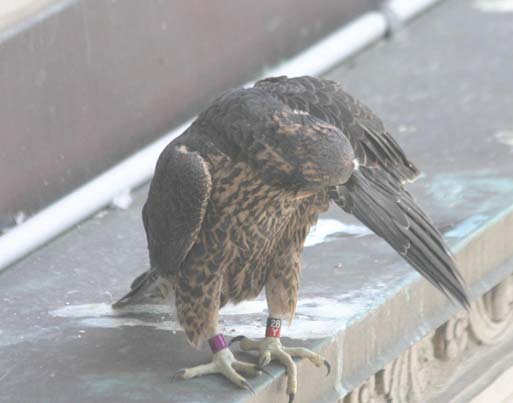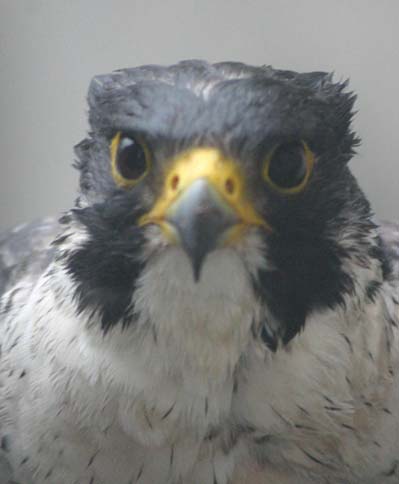FALCON FLASH
Dateline: Cleveland, Ohio
June 13, 2013
Click here to read what happened earlier
Watch the falcons live at: http://www.falconcam-cmnh.org/news.php
Our thanks to the Cleveland Museum of Natural History for sponsoring the FalconCams and for the still.
The file photo of a fledgling flying and the picture of Uno with down in her beak are courtesy of volunteers Mr. and Mrs. Mrs. Saladin. All other photos are courtesy of Mr. Scott Wright, volunteer peregrine nest monitor. Photos may be used in any non-commercial publication, electronic or print, but please give photo credit.
Although no one has yet reported seeing Ginger fly, no one had seen her anywhere at all for days, so she must have flown. In fact, falcon fans were beginning to worry about her absence. Not to worry – here she is back safe and sound in the nestbox with her sister.
Here is a file photo of how an early fledge looks.
A few days ago, volunteer peregrine nest monitor, Mr. Scott Wright, suspected that Ginger was flying, because when he visited he couldn’t find her. He observed Tess flying successfully between floors of her skyscraper home. She seemed to like the 29th floor as her new base. Here is Tess on the 29th floor looking in the window at Mr. Wright.
Mr. Wright tells us, “The first few months of flying are dangerous for young peregrines as they must learn to fly successfully at high speeds. Think of a teenager who has just gotten his or her driver's license and then is handed the keys to a car that can go 150MPH!!! One thing Mother Nature does to help the new flyers survive is to give them "Speed Brakes" of a sort. If you look closely at the edges of the juvenile feathers you can see a brownish ROUGH edge. This causes a slower flow of air over the wing and makes the young falcons fly slower than adults who have molted into adult feathers”. Look closely at pictures of the young falcons and compare them to their parents to see the difference in plumage. SW's adult plumage is on the left - notice the difference in color as well as the structure. Juvenile feathers are on the right and show "Nature's Speed Brakes".
In the next picture, Tess demonstrates that every bird instinctively knows how to clean its feathers, an important activity called “preening.”
Preening must be done to keep the feathers clean and healthy. Volunteer nest monitor, Mr. Scott Wright, tells us, “Feathers are a bird's pride and joy and often they will do feather maintenance before they eat or drink”.
It was raining while Mr. Wright observed the birds and Boomer was soaked. He must have had to do a lot of preening after the rain stopped to get his feathers back in order.
And here she is with SW on the 29th floor. Wow she’s a big girl! SW and Boomer have been feeding their 2 youngsters very well.
For the next month or so, as the young falcons learn to fly and hunt, their parents will continue to feed them. In the following picture notice Tess’s full crop.
Click here to read what happened next

